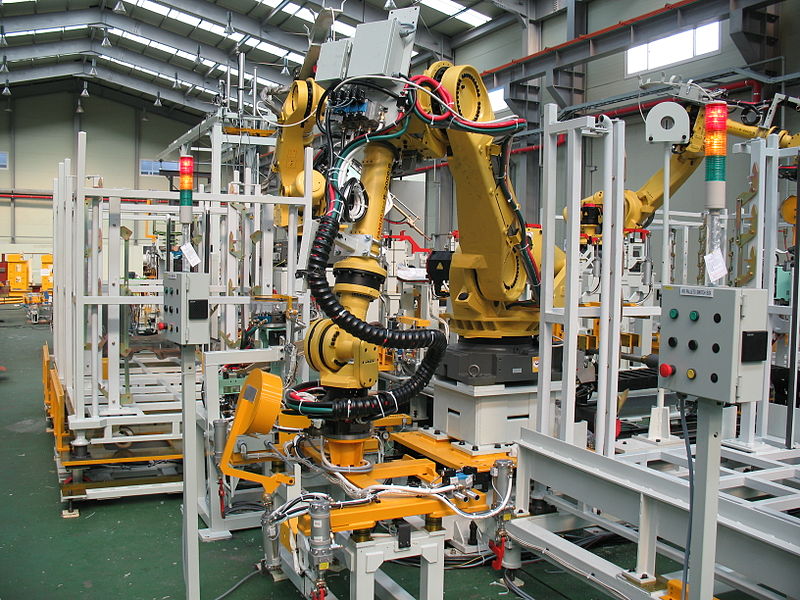
What are the benefits of measuring manufacturing efficiency?
by Emily Newton, Editor-in-Chief, Revolutionized
Study the opportunities, listen to the data and make future-focused decisions today.

PHOTO: Mixabest via Wikimedia Commons
Every industry benefits from efficiency-enhancing technologies and techniques. Manufacturing is especially receptive to new ways to improve and measure efficiency.
Manufacturing is still reeling from a global pandemic, and it must also reconcile larger human populations, rising demand for essential goods and staff shortages with their actual capacity. This calls for a new approach to measure manufacturing efficiency.
Learn how to measure and improve manufacturing efficiency
Exploring some of the steps involved in improving manufacturing efficiency is helpful. Any manufacturer will admit this is a continuous struggle.
These are some areas where measuring existing capacity and benchmarks will yield dividends and lead to manufacturing efficiency-boosting changes and investments.
1. Engaging in conceptualization and development
Developing a new business model or efficiency-boosting workflow involves conceptualization and development. However, redundancy and wasted effort or material can define the new process. Build a cross-disciplinary team to ensure improvements don’t result in duplicated effort. Employees will be even better than the C-suite at identifying what’s worth changing and what might result in clashes.
This is also when leaders will likely discuss vetting and purchasing additional or improved manufacturing equipment. Don’t mistake the sticker price for the true cost of ownership. Solving a problem with the wrong investment is always a recipe for compromised efficiency.
Defer to subject-matter experts and frontline workers first. Measure manufacturing efficiency the way they do personal and process efficiency.
Conceptualization and development should involve as many voices as possible. Make deliberate choices. Solve small problems and seize easy wins before investing in more elaborate technologies.
2. Harmonizing supply-chain processes
Making the industry more efficient demands a balance between a proactive and lean ordering process. The pandemic and other matters have forced companies to invest even deeper in the concept of lean — “just in time” (JIT) — ordering and manufacturing.
Measuring manufacturing efficiency through the lens of JIT production has companies iterating on their products over a longer development cycle. The result is a more stable supply pipeline for raw materials and better products.
Manufacturers can study patterns in consumer purchases, supply-chain events, raw-goods sourcing and climate forecasts to make informed decisions. They can determine when to resupply to bolster inventory, launch a new product and iterate on an existing one for longer.
Consider measuring manufacturing capacity in real-time using advanced enterprise-resource planning software. Machine learning can deliver timely alerts when demand threatens to overwhelm supply or requires a pivot. This lets decision-makers see further into the future and make better choices.
3. Boosting manufacturing capacity
Maximizing the capacity of a given plant is a huge part of improving manufacturing efficiency. This can take many forms:
- Available staff vs. required output: Adopting automated inspection tools to make do with limited personnel.
- Changeover and downtime: Using robotics and automated changeover to reduce downtime between production runs of different products.
- Safety-incident data and takt times: Rethinking the physical layout of manufacturing plants to eliminate unnecessary travel and respond to safety-incident data.
- Inventory expenses and waste output: Joining human intuition with robotic labour to move materials and shipments more quickly.
There are enormous benefits to measuring and enhancing benchmarks. Manufacturers with excess or versatile capacity successfully pivoted during the pandemic and are more likely to participate in the emerging manufacturing-as-a-service economy.
Study manufacturing efficiency to raise it higher
Every manufacturer has a profit motive to do better and an obligation to the public and the planet. Human populations may be growing, but resources and manufacturing capacity can meet needs. Study the opportunities, listen to the data and make future-focused decisions today.